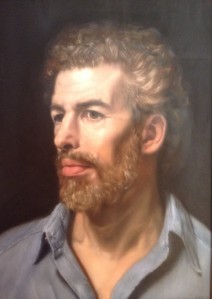In-Sight Publishing
Born to do Math 12 - Protons, Neutrons, and Electrons
Born to do Math 12 - Protons, Neutrons, and Electrons
Scott Douglas Jacobsen & Rick Rosner
March 19, 2017
[Beginning of recorded material]
Rick Rosner: Then
there’s one more thing, which is that protons and neutron—which are really
protons with one quark flipped over. They’re pretty much two flavors of the
same particle, same composite particle. They are probably the engines of
agglomeration in the universe. They are probably the workhorses. It probably
does the most work in generating information and having the relationships, the
clusters. Most of the work is probably done by protons and neutrons.
And then I’m going to waffle and say, “And
they’re associated particles.” For every proton there is, there is a tension in
the information structure, the net of information in the universe, and that
tension is represented or reflected or manifested in what looks like a particle
that we call an electron. But it might at some point, if this theory ever gets
pushed in a productive direction, it might be useful to look at electrons not
as particles or just as particles.
But as manifestations of the information
created in information space by protons, and for some quantum mechanical,
mathematical reason, this often takes the form of particles, like electrons in
a 1-to-1 ratio with protons. The at-homeness of each proton, with its position
in information space may be reflected by how tightly an electron is locked onto
the proton. An ionized proton; that is, an energetic proton that has so much
kinetic energy relative to whatever it is surrounded by.
Maybe, all of the other stuff around it
probably has some kinetic energy. If everything around this proton has a lot of
kinetic energy, enough kinetic energy so that everything’s ionized and is a
plasma, those protons are not very at-home with where they are in information
space. They have all of this excess kinetic energy. They are bouncing around. A
calmer proton, one that is more in line with local—I want to say, “Flow,” but I
don’t because it’s misleading—distribution of particles within its space, a
calmer proton.
It has less kinetic energy. It might have an
electron locked onto it, into orbit around it – reflecting the proton is pretty
well-situated or in good agreement with the matter around it. A proton, a bunch
of protons, with electrons in ground states are going to do less interacting
with each other, or at least less energetic interaction with each other, than
the protons and electrons in a plasma. Perhaps the calmest possible
proton-electron pair is one where the proton has been flipped into a neutron,
which effectively removes an electron from circulation.
So the whole thing has zero charge. The
neutron isn’t going to be doing any appreciable electromagnetic interacting
with its surroundings. It’s as situated, as comfortably taken care of, as it
can possible be.
Authors[1]

Rick Rosner
American Television Writer
RickRosner@Hotmail.Com
Rick Rosner

Scott Douglas Jacobsen
Editor-in-Chief, In-Sight Publishing
Scott.D.Jacobsen@Gmail.Com
In-Sight Publishing
Endnotes
[1] Four format points for the session article:- Bold text following “Scott Douglas Jacobsen:” or “Jacobsen:” is Scott Douglas Jacobsen & non-bold text following “Rick Rosner:” or “Rosner:” is Rick Rosner.
- Session article conducted, transcribed, edited, formatted, and published by Scott.
- Footnotes & in-text citations in the interview & references after the interview.
- This session article has been edited for clarity and readability.
- American Psychological Association. (2010). Citation Guide: APA. Retrieved from http://www.lib.sfu.ca/system/files/28281/APA6CitationGuideSFUv3.pdf.
- Humble, A. (n.d.). Guide to Transcribing. Retrieved from http://www.msvu.ca/site/media/msvu/Transcription%20Guide.pdf.
License
In-Sight Publishing and In-Sight: Independent Interview-Based Journal by Scott Douglas Jacobsen is licensed under a Creative Commons Attribution-NonCommercial-NoDerivatives 4.0 International License.
Based on a work at www.in-sightjournal.com and www.rickrosner.org.
Copyright
© Scott Douglas Jacobsen, Rick Rosner, and In-Sight Publishing and In-Sight: Independent Interview-Based Journal 2012-2017. Unauthorized use and/or duplication of this material without express and written permission from this site’s author and/or owner is strictly prohibited. Excerpts and links may be used, provided that full and clear credit is given to Scott Douglas Jacobsen, Rick Rosner, and In-Sight Publishing and In-Sight: Independent Interview-Based Journal with appropriate and specific direction to the original content.
No comments:
Post a Comment